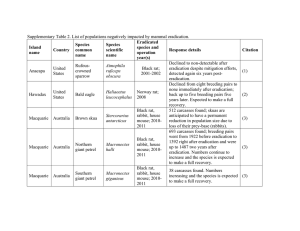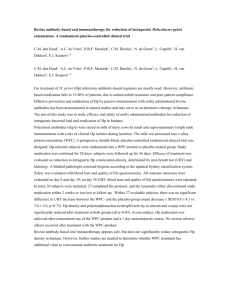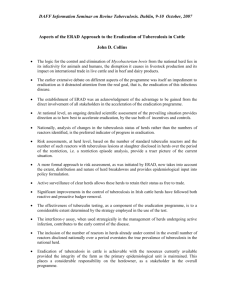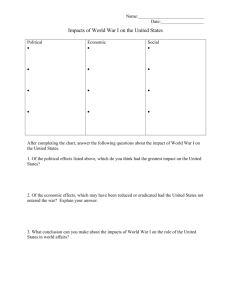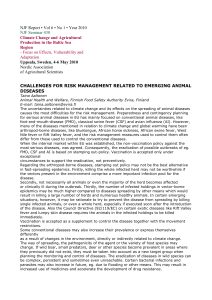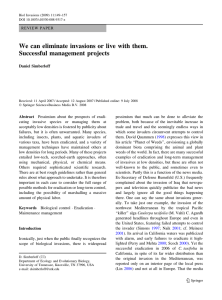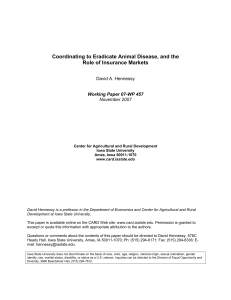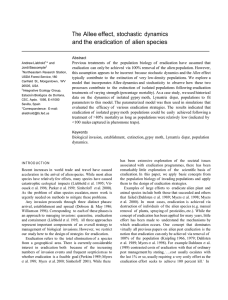Lecture 20 Eradication •
advertisement
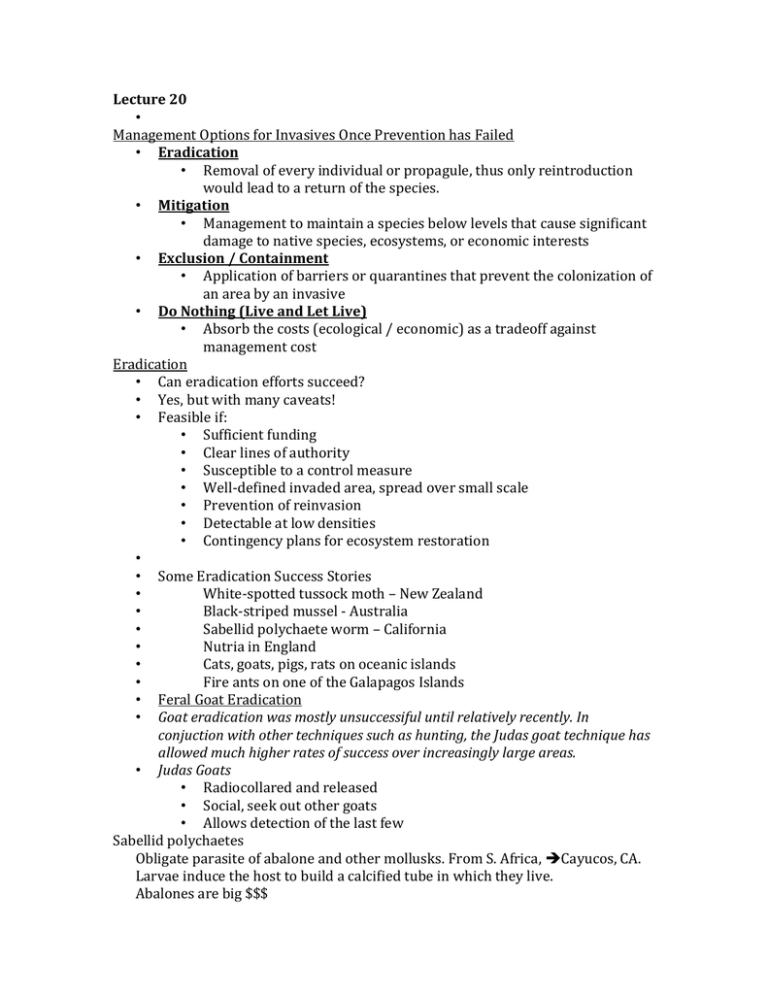
Lecture 20 • Management Options for Invasives Once Prevention has Failed • Eradication • Removal of every individual or propagule, thus only reintroduction would lead to a return of the species. • Mitigation • Management to maintain a species below levels that cause significant damage to native species, ecosystems, or economic interests • Exclusion / Containment • Application of barriers or quarantines that prevent the colonization of an area by an invasive • Do Nothing (Live and Let Live) • Absorb the costs (ecological / economic) as a tradeoff against management cost Eradication • Can eradication efforts succeed? • Yes, but with many caveats! • Feasible if: • Sufficient funding • Clear lines of authority • Susceptible to a control measure • Well-defined invaded area, spread over small scale • Prevention of reinvasion • Detectable at low densities • Contingency plans for ecosystem restoration • • Some Eradication Success Stories • White-spotted tussock moth – New Zealand • Black-striped mussel - Australia • Sabellid polychaete worm – California • Nutria in England • Cats, goats, pigs, rats on oceanic islands • Fire ants on one of the Galapagos Islands • Feral Goat Eradication • Goat eradication was mostly unsuccessiful until relatively recently. In conjuction with other techniques such as hunting, the Judas goat technique has allowed much higher rates of success over increasingly large areas. • Judas Goats • Radiocollared and released • Social, seek out other goats • Allows detection of the last few Sabellid polychaetes Obligate parasite of abalone and other mollusks. From S. Africa, Cayucos, CA. Larvae induce the host to build a calcified tube in which they live. Abalones are big $$$ Two native snails are primary hosts, but have to exceed a size threshold before they are parasitized Objective: reduce large snail density below where the sabellid could maintain itself. Army of volunteers removed 1.6 million snails over 1 cm in length. No polychaetes detected in the following 5 years, declared eradicated. White-spotted tussock moth • Orgyia thyellina (white-spotted tussock moth) was discovered in Auckland, NZ, in 1996. • A two-year campaign ($12 million) has resulted in its eradication • Black-Striped Mussel • A total of 23 aerial sprays with Btk and 21 rounds of ground sprays took place • Subsequent pheromone trapping has not captured a male since 1998, nor have any other life stages been found Black-striped mussel, Mytilopsis sallei • A marine version of zebra mussel, appeared in Darwin, Australia in 3 marinas in 1999. • 9 days after detection, eradication effort launched. • 3 marinas were treated with 160 tons of bleach, 60 tons of copper sulfate, effectively killing all aquatic life. • 270 people, and $2.2 M (excluding labor costs) and took four weeks. • None detected in following 3 years, declared eradicated Unintended/Indirect Consequences of Eradication • Poisoning of native species • Bioaccumulation • Direct toxicity • Removal of one exotic triggers an invasion or population release of another species. • May have more profound effects on diversity than the eradicated species! • May need to reconstruct ecosystems and invest heavily in restoration efforts. Taylor et al. 2000. Restoration Ecology 8: 151-160. Rat eradication • Langara Island - one of Canada’s biggest seabird breeding colonies. • Four burrow nesters (auklets, 2 murrelet species, petrels) disappeared over a 9 year period, ) Norway rats implicated. • Try to eliminate rats by poisoning them with anticoagulant bait stations. • Ravens figured out how to extract the bait from the dispenser. • Bald eagles ate dead ravens, and were themselves poisoned. • Ultimately, program successful but half the islands ravens died, significant number of eagles. •

